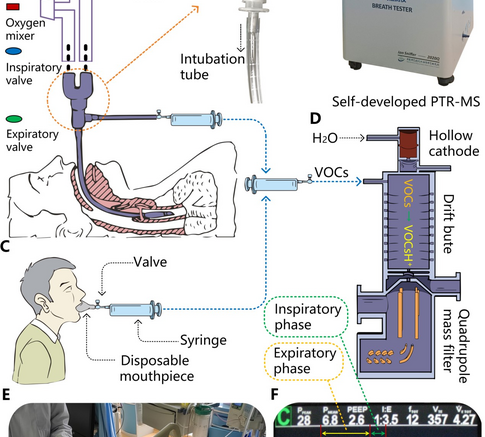Ventilator-associated pneumonia (VAP) is the most common type of nosocomial infection in the intensive care unit. Clinical diagnosis of VAP still depends on the results of microbial culture identification of lower respiratory tract specimens of suspected patients, which takes about one to three days. At present, there is no way to quickly determine the infection status of patients, and the initial anti-infection regimen can only rely on the experience of doctors, which leads to the abuse of antibiotics and the failure of initial treatment.
A research team, which was led by professor Huang Ying from the Institute of Health and Medical Technology, Hefei Institutes of Physical Science of the Chinese Academy of Sciences, has been conducting research aiming at a new non-invasive screening method for VAP.
With a self-developed breath tester (PTR-MS), they successfully detected exhaled volatile organic compounds (VOCs) from patients infected with VAP recently and published the results in Talanta and Analytical and Bioanalytical Chemistry.
The research was based on the deep airway breath sampling method.
In this study, they proposed a mode of breath sampling for patients with endotracheal intubation/incision - deep airway breath sampling method.
Combined with the self-developed breath tester, it only took a few minutes for breath sampling and testing patients with endotracheal intubation/incision. The characteristic ions that differentiated VAP were statistically detected by breath testing in infected and uninfected patients.
In addition, the main pathogens of infected patients were cultured in vitro to study the relationship between the iconic VOCs in the breath of VAP patients and the VOCs released by common pathogens.
The sensitivity and specificity were 71.4% and 84.4%, respectively. The results showed that exhaled acetaldehyde could be used to screen for VAP.
"The breath test has always been a hot spot in the field of disease diagnosis because it is safe, non-invasive, simple, and convenient," said Xu Wei, first author of the paper. "We hope that the rapid screening for VAP through breath test could assist doctors making treatment plan in time."
